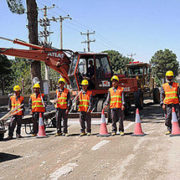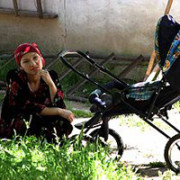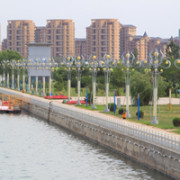
About Paul Vandenberg
Paul Vandenberg is a Senior Economist in the Economic Research and Regional Cooperation Department of the Asian Development Bank.Networks and technologies to assist the vulnerable during the pandemic

Developed countries can use advanced social security systems to protect households from the economic effects of the COVID-19 pandemic, but developing countries face a bigger challenge. They typically have a large informal sector and limited social security coverage, which hinder the delivery of assistance at short notice. Yet, developing Asia is better equipped to cushion the economic impact of the current crisis compared to the global financial crisis of 2008.
Market failure or low-skills equilibrium?

As we know from countless growth accounting studies, the ability of a country to educate and train its citizens is a key determinant of economic development. There is also fairly strong evidence at the company level that a workforce with higher human capital generates higher productivity. In other words, not only are there strong incentives for governments to educate and train people, but there are also incentives at the firm level for companies to hire more educated workers and to offer training to their existing workers.
The impact of trade on employment in the Sustainable Development Goals

Employment was an afterthought in the Millennium Development Goals (MDGs). It was not part of the original goals but was added in 2008, halfway through the implementation period. It is, however, a key element of the Sustainable Development Goals (SDGs). Goal 8 encourages countries to “promote sustained, inclusive and sustainable economic growth, full and productive employment and decent work for all.” There are eight employment-related targets and ten specific indicators (United Nations 2015).
Benefits of education and training for SMEs in Asia

The importance of small and medium-sized enterprises (SMEs) to economies in Asia is well known. They account for over 95% of all businesses, a third to half of aggregate output, and the majority of enterprise employment (Vandenberg, Chantapacdepong, and Yoshino 2016). We also know that SMEs do not have an easy life. They struggle to get established, face a higher failure rate than large firms, and lack access to key inputs such as finance. Finding ways to increase their survival rate and growth is important for expanding private sector activity in Asia’s developing economies. Sustaining enterprises requires that they are competitive; competitiveness, in turn, is based on productivity.
Middle-income economies: Slowdowns, traps and transitions

The notion of a middle-income trap has generated much interest and discussion, but little consensus. There is no agreement on what the trap is or how long a country needs to be at the middle-income stage to be considered trapped. Much of the current discussion is about growth slowdowns, but is a slowdown the same as a trap? It is also possible that the trap does exist but we do not know what causes it.
People’s Republic of China: The challenge of the middle-income transition

The Chinese economy grew by 7.4% in 2014 and is expected to expand by 7.0% this year. These are impressive growth rates for any country but lower than what has been achieved in the past. For 3 solid decades, since the beginning of market reforms in the late 1970s, the economy expanded by an annual average of almost 10%.
New Zealand: A farming and services growth model for Asia?

The story of East Asia’s rapid growth includes ample reference to the export of technologically complex manufactured goods, such as cars and computers. This is the model that has characterized Japan, the Republic of Korea, and Taipei,China. It also provides an example for Asia’s current middle-income countries, including the People’s Republic of China (PRC). They need to develop high-value manufacturing, the argument goes, churning out domestically designed goods or linking into global production networks. Failure to move up the value chain may result in a country getting stuck in the middle-income trap (Zhuang et al. 2012).
India: Defeat of the inclusive growth agenda?

Elections are complex affairs and the factors that give rise to a change of government normally include the three Ps of personalities, policies, and past performance. This is certainly true of the recent election in India. The Congress Party, led by the Gandhi dynasty, lost control of the government to a resurgent Bharatiya Janata Party headed by the former chief minister of Gujarat state, Narendra Modi. A key question is whether the policies of inclusion, pursued by Congress for a decade, were rejected by the electorate.


Search
Subscribe / Connect to Asia Pathways
Subjects
- Agriculture and natural resources
- Blog
- Capacity development
- Climate change
- Economics
- Education
- Energy
- Environment
- Finance sector development
- Gender
- Governance and public sector management
- Health
- Industry and trade
- Information and Communications Technology
- Infrastructure
- Miscellaneous
- Population
- Poverty
- Private sector development
- Regional cooperation and integration
- Sanitation
- Social development and protection
- Transport
- Uncategorized
- Urban development
- Video Blog
- Water
Recent Posts
- Transforming ASEAN: Advancing Regional Integration, Social Inclusion, and Environmental Sustainability
- Development of the Creative Economy in Asia and the Pacific
- Kashima City’s Great Transformation: Where Industry Meets Community
- Mechanization Driving the Future of Agriculture in Asia
- Natural Capital: Valuing Nature to Protect and Restore Ecosystem Services for Sustainable Development




Recent Comments